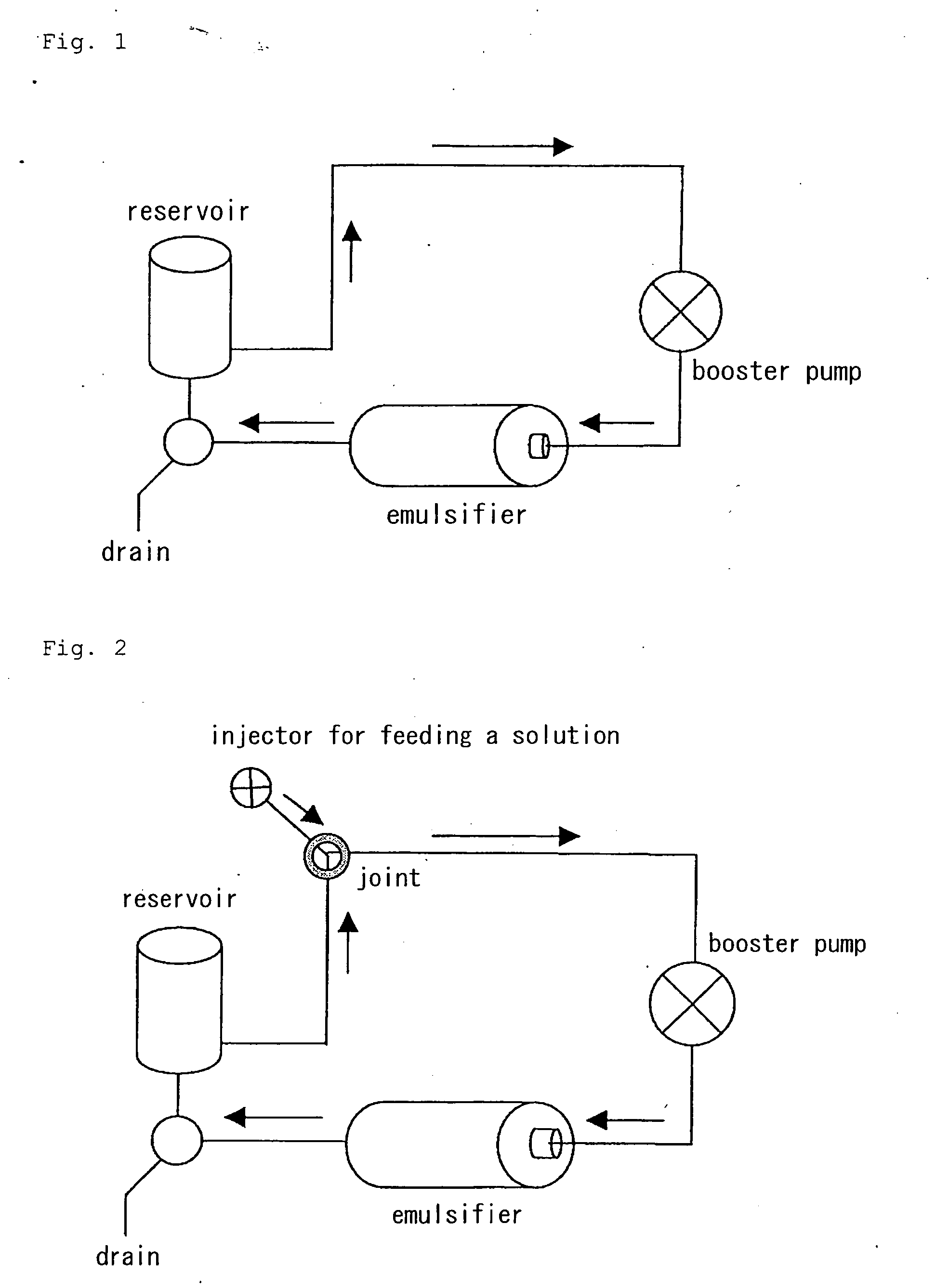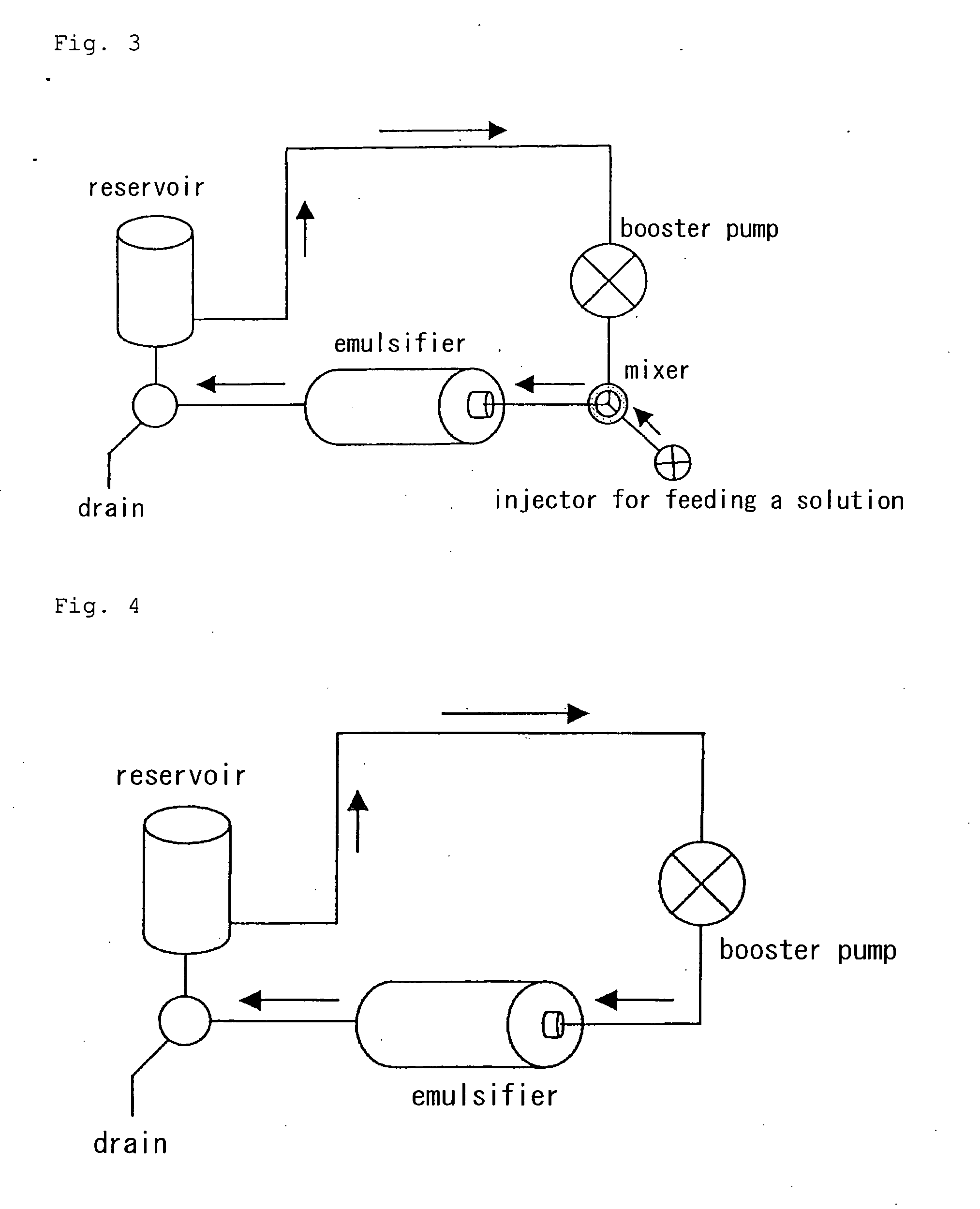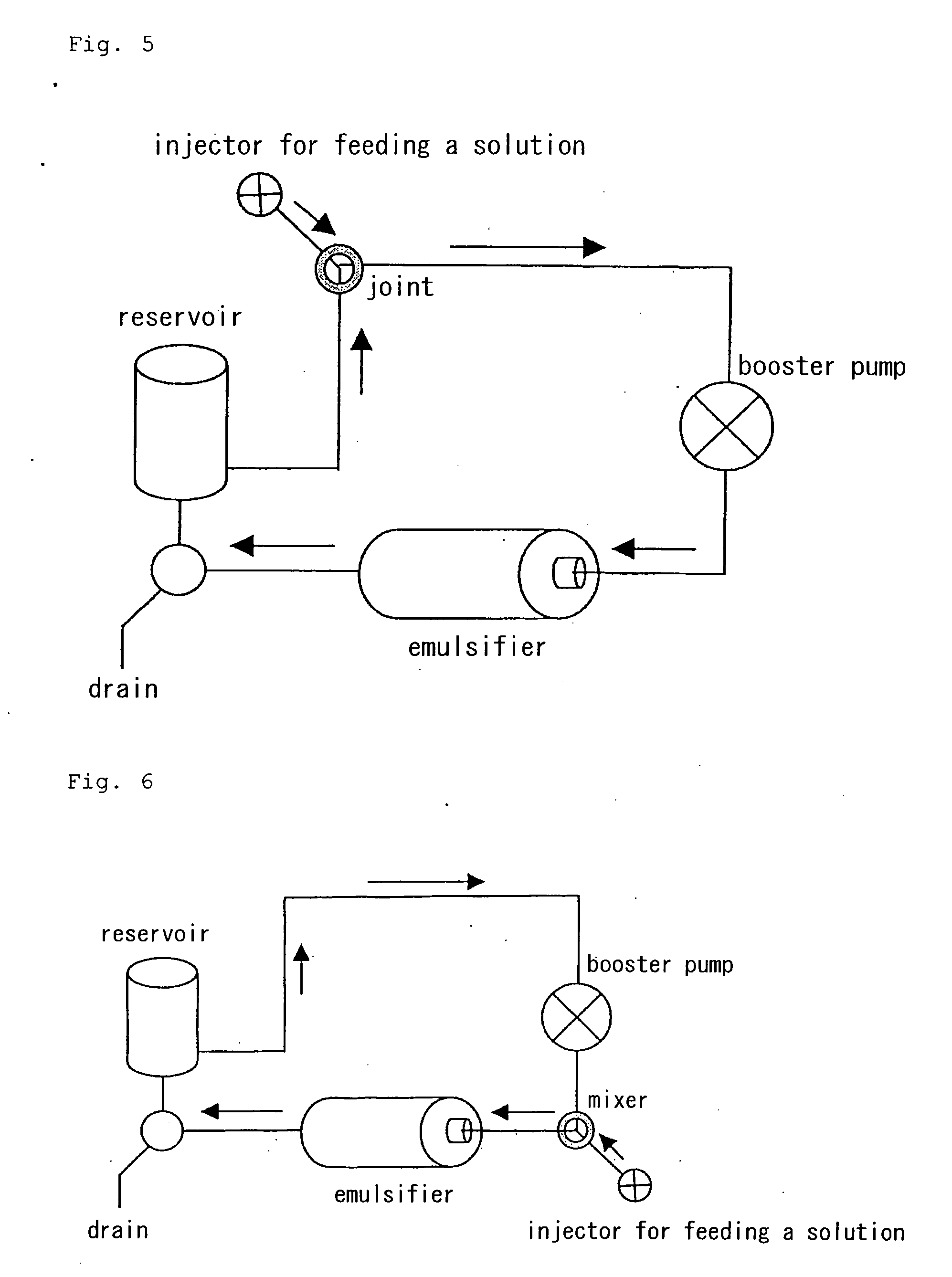Process for producing drug ultramicroparticle and apparatus therefor
a technology of drug particles and ultra-microns, which is applied in the direction of drug compositions, immunological disorders, metabolism disorders, etc., can solve the problems of affecting the production efficiency of drug particles, affecting the quality of drug particles, etc., to achieve excellent long-term dispersibility, efficient production of fine drug particles, and stable over a long time
- Summary
- Abstract
- Description
- Claims
- Application Information
AI Technical Summary
Benefits of technology
Problems solved by technology
Method used
Image
Examples
example 1
[0077] In a Microfluidizer (Micorofluidics Inc.) was circulated 7 mL of a 1% aqueous solution of Pluronic F68. To the circulating solution was added 100 μL of a 50 mg / mL solution of N-(3-chloro-7-indolyl)-1,4-benzenedisulfonamide in acetone. The mixture was emulsified by pressurizing at 3000 psi for 20 minutes and thereby yielded fine particles of N-(3-chloro-7-indolyl)-1,4-benzenedisulfonamide having an average particle size of 218 nm.
example 2
[0078] A suspension of fine particles of N-(3-chloro-7-indolyl)-1,4-benzenedisulfonamide having an average particle size of 218 nm was prepared by circulating 7 mL of a 1% aqueous solution of Pluronic F68 in a Microfluidizer; adding 100 μL of a 50 mg / mL solution of N-(3-chloro-7-indolyl)-1,4-benzenedisulfonamide in acetone to the circulating solution; and pressurizing the mixture at 3000 psi for 20 minutes. The average particle size of fine drug particles in the resulting suspension was sequentially determined until 48 hours after the production, but no significant change was observed.
examples 3 to 5
[0079] A series of fine drug particles having average particle sizes of 172.7 nm, 178.8 nm, and 211.3 nm, respectively, were prepared by circulating 7 mL of a 1% aqueous solution of Pluronic F68 in a Nanomiser; adding 100 μL of a 50 mg / mL solution of N-(3-chloro-7-indolyl)-1,4-benzenedisulfonamide in acetone to the circulating solution; and pressurizing and emulsifying the mixture at 8700 psi (Example 3), 15600 psi (Example 4), and 20900 psi (Example 5), respectively, for 20 minutes.
PUM
| Property | Measurement | Unit |
|---|---|---|
| particle size | aaaaa | aaaaa |
| particle size | aaaaa | aaaaa |
| solubility | aaaaa | aaaaa |
Abstract
Description
Claims
Application Information
 Login to View More
Login to View More - R&D
- Intellectual Property
- Life Sciences
- Materials
- Tech Scout
- Unparalleled Data Quality
- Higher Quality Content
- 60% Fewer Hallucinations
Browse by: Latest US Patents, China's latest patents, Technical Efficacy Thesaurus, Application Domain, Technology Topic, Popular Technical Reports.
© 2025 PatSnap. All rights reserved.Legal|Privacy policy|Modern Slavery Act Transparency Statement|Sitemap|About US| Contact US: help@patsnap.com



